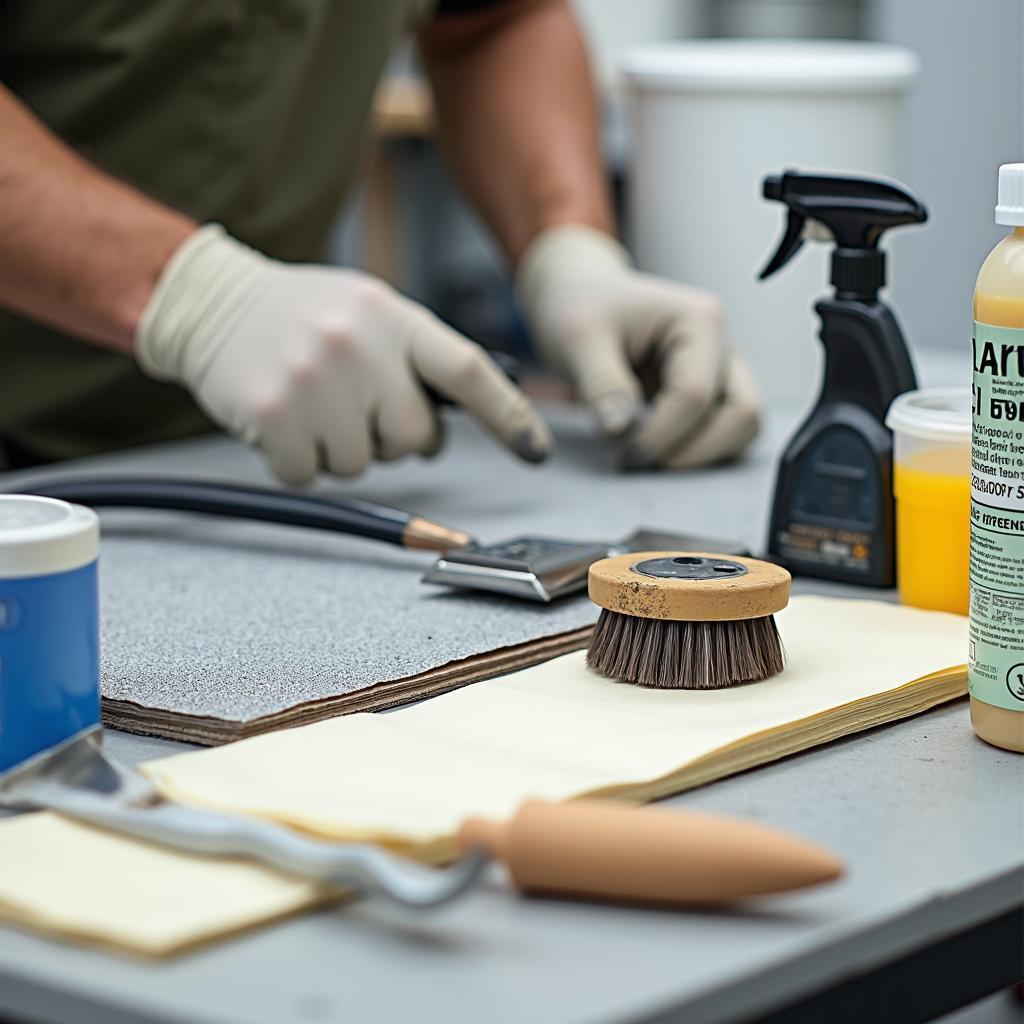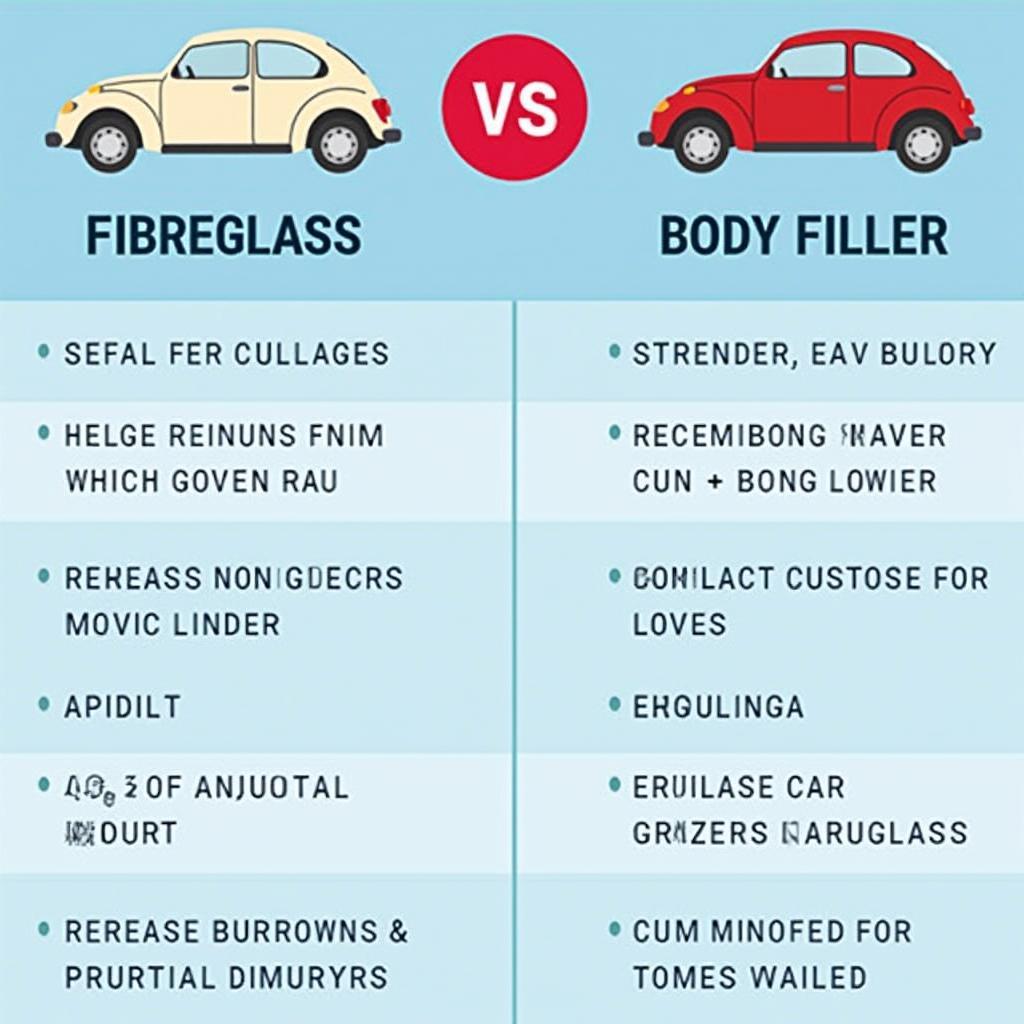
Essential tools for fibreglass car body repair
Fibreglass is a popular material for car body repair because it is strong, lightweight, and relatively easy to work with. When applied correctly, fibreglass can create a durable and seamless repair that is nearly invisible to the naked eye.
This comprehensive guide will explore the ins and outs of Car Body Repair With Fibreglass, providing you with the knowledge you need to understand the process, whether you’re considering a DIY approach or seeking professional help.
Understanding Fibreglass in Car Body Repair
Fibreglass, also known as glass fibre reinforced plastic (GFRP), is a composite material made of glass fibres embedded in a resin matrix. The glass fibres provide strength and stiffness, while the resin holds the fibres together and binds them to the car body.
There are two main types of fibreglass resin used in car body repair: polyester resin and epoxy resin. Polyester resin is more common and less expensive, but epoxy resin offers better adhesion, strength, and chemical resistance.
When to Choose Fibreglass for Car Body Repair
Fibreglass is an excellent option for repairing a variety of car body damage, including:
- Rust holes: Fibreglass can effectively fill in rust holes and prevent further corrosion.
- Dents and cracks: It can be used to repair both small and large dents and cracks in car panels.
- Missing sections: Fibreglass can be molded to replace missing sections of a car body, such as bumpers or fenders.
- Custom modifications: It’s a versatile material for creating custom body kits, spoilers, and other modifications.
Advantages of Using Fibreglass
- Strength and durability: Fibreglass repairs are strong and can withstand the rigors of daily driving.
- Lightweight: It won’t add significant weight to your vehicle, which can affect fuel efficiency.
- Cost-effective: Compared to replacing entire body panels, fibreglass repair can be a more affordable solution.
- Versatility: Fibreglass can be molded into various shapes and sizes, making it ideal for complex repairs.
The Fibreglass Car Body Repair Process
While a professional repair shop is recommended for the best results, understanding the basic steps involved in fibreglass car body repair can be beneficial:
- Preparation: The damaged area needs to be thoroughly cleaned and sanded to create a rough surface for the fibreglass to adhere to.
- Cutting and Shaping: Fibreglass matting is cut to the appropriate size and shape to fit the damaged area.
- Applying the Resin: The resin is mixed with a hardener and applied to the prepared surface, followed by the fibreglass matting.
- Layering and Compressing: Multiple layers of fibreglass matting and resin are applied, ensuring each layer is properly compressed to remove air bubbles.
- Curing Time: The resin needs time to cure and harden, which can vary depending on the type of resin used.
- Sanding and Shaping: Once cured, the repaired area is sanded and shaped to match the contours of the car body.
- Primer and Paint: Finally, primer and paint are applied to create a smooth and seamless finish.
 Essential tools for fibreglass car body repair
Essential tools for fibreglass car body repair
Tips for a Successful Fibreglass Car Body Repair
- Safety First: Always wear appropriate safety gear, including gloves, eye protection, and a respirator when working with fibreglass.
- Proper Preparation is Key: Thoroughly cleaning and sanding the damaged area is crucial for good adhesion.
- Work in a Well-Ventilated Area: Fibreglass resin fumes can be harmful, so ensure adequate ventilation.
- Patience is a Virtue: Allow ample curing time for the resin to harden properly.
- Seek Professional Help When Needed: Don’t hesitate to consult with a professional if you’re unsure about any aspect of the repair process.
Fibreglass vs. Body Filler: Which to Choose?
Both fibreglass and body filler can be used for car body repairs, but they have different strengths and weaknesses. Body filler is best suited for small dents and imperfections, while fibreglass is more appropriate for larger holes, cracks, and structural repairs.
 Choosing between fibreglass and body filler for car body repair
Choosing between fibreglass and body filler for car body repair
Conclusion
Car body repair with fibreglass is a versatile and cost-effective solution for a range of damage. By understanding the process and following the right techniques, you can achieve durable and professional-looking results.
Remember, while DIY fibreglass repair is possible, consulting with a reputable car body repair shop is always recommended for more complex repairs or if you’re unsure about any aspect of the process.




